The 9 Pro is OnePlus’s 2021 flagship and is packed with top-end technology, including Qualcomm’s Snapdragon 888 chipset, 5G connectivity, and a 4500 mAh battery with fast wireless charging. There’s also a 6.7-inch AMOLED LTPO display with an automatically variable refresh rate up to 120 Hz, and a choice of either 8 RAM / 128 GB, or 12 RAM / 256 GB handsets.
In the camera department, OnePlus now touts a partnership with the iconic photography company Hasselblad, with the stated aim of “taking mobile photography to the next level.” To that end the 9 Pro boasts a quad camera that includes standard-wide, ultra-wide, and telephoto modules as well as a 2 MP monochrome sensor. The primary camera looks very similar to last year’s 8 Pro and features a 48 MP 2×2 OCL Quad-Bayer sensor.
The ultra-wide camera looks similar on paper, too, with a 14 mm-equivalent focal length and f/2.2 aperture. OnePlus has switched to the larger Sony IMX 766, 50 MP, 1/1.56″ sensor for the ultra-wide on the 9 Pro, though, which should allow for a higher photon flow and give it an edge over some competitors.
The tele camera utilizes an 8 MP sensor, with a 77 mm-equivalent, f/2.4-aperture lens with OIS that’s very similar to the 8 Pro’s. That 77 mm equates to around a 3x optical zoom, which is decent but falls short of the longer ranges available on competitors like the Samsung Galaxy S21 Ultra and the Xiaomi Mi 11 Ultra.
In the video department, the OnePlus 9 Pro comes with 8K recording at 30 fps — a step up from the 8 Pro, which was limited to 4K resolution.
Key camera specifications:
- Primary: 48 MP 1/1.43″ Quad-Bayer sensor, 1.12μm, 23 mm-equivalent f/1.8-aperture lens, PDAF and OIS
- Ultra-wide: 50 MP 1/1.56″ sensor, 1μm, 14 mm-equivalent f/2.2-aperture lens
- Tele: 8 MP sensor, 1μm, 77 mm-equivalent f/2.4-aperture lens, OIS
- 2 MP monochrome sensor (not tested)
- Video: 4320p at 30 fps, 2160p at 120/60/30 fps, 1080p at 60/30 fps
Note: This device was tested with firmware version OS 11.2.3.3.LE15BA. A new version is expected to be released soon. Once it is available we will confirm image quality and update this article if there are any noticeable changes.
About DXOMARK Camera tests: For scoring and analysis in our smartphone camera reviews, DXOMARK engineers capture and evaluate over 3000 test images and more than 2.5 hours of video both in controlled lab environments and in natural indoor and outdoor scenes, using the camera’s default settings. This article is designed to highlight the most important results of our testing. For more information about the DXOMARK Camera test protocol, click here. More details on how we score smartphone cameras are available here.
Test summary
Scoring
Sub-scores and attributes included in the calculations of the global score.
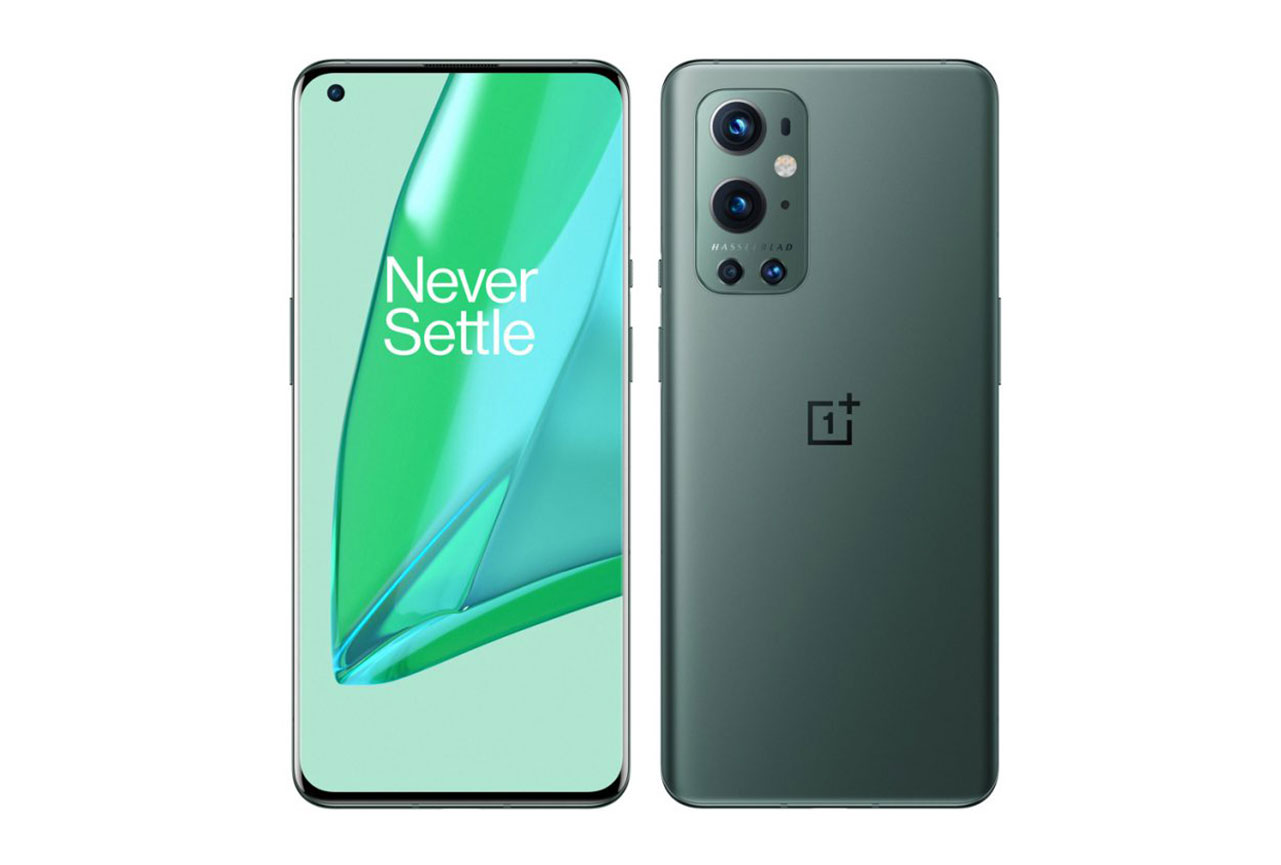
OnePlus 9 Pro


Use cases & Conditions
Use case scores indicate the product performance in specific situations. They are not included in the overall score calculations.
Outdoor
Photos & videos shot in bright light conditions (≥1000 lux)
Indoor
Photos & videos shot in good lighting conditions (≥100lux)
Lowlight
Photos & videos shot in low lighting conditions (<100 lux)
Friends & Family
Portrait and group photo & videos
Pros
- Mostly accurate white balance in all conditions
- Mostly high levels of detail, especially in outdoor photos
- Reliable exposure preview
- Accurate target exposure and wide dynamic range in indoor videos
- Fast and accurate video autofocus
- Well-controlled noise in most videos
- Effective video stabilization
Cons
- Luminance and chroma noise in all conditions
- Underexposure and limited dynamic range in backlit scenes
- Occasional autofocus failures, especially in daylight and low light
- Exposure instabilities in photos and videos
- Various artifacts visible in photos and videos
- Autofocus instabilities at medium- and long-range tele
- White balance errors and instabilities in indoor and low-light videos
An overall score of 124 positions the OnePlus 9 Pro just outside the top 10 in our ranking of the best smartphones for photography. That’s a point better than the Samsung Galaxy S21 Ultra 5G (Snapdragon) at 123, and only a little behind Apple’s iPhone 12 Pro Max at 130. While the 9 Pro’s price tag places this latest OnePlus price in our ultra-premium price segment, it remains notably cheaper than those Apple and Samsung flagship devices and makes it a good value proposition for smartphone photography enthusiasts.
The OnePlus 9 Pro’s Photo score of 129 is a good indicator that it gets most of the basics right. Dynamic range is particularly impressive, with bright highlights often well preserved when shooting in high-contrast conditions. Target exposures of people can be a little low in strongly backlit shots and our testers observed occasional exposure instabilities, but for the most part you can rely on the 9 Pro to deliver nice exposure.
White balance is fairly neutral in most shots, too, and colors are generally well saturated. Skin tone rendering could be improved slightly, though, as a greenish tint often makes portraits look a little unnatural. Detail is particularly impressive in outdoor shots, and even as the light levels drop the device is able to retain detail in fine structures.
Issues with noise and autofocus were our main concerns in the Photo analysis. The good detail rendering comes at the expense of a fairly high level of chromatic and luminance noise, which is visible in most images. Autofocus failures sometimes occur, too. While we found focusing to be fairly fast and accurate under bright, well-balanced lighting conditions, the OnePlus 9 Pro tends to struggle a little in high-contrast scenes as well as in low light.
Under close scrutiny, multiple artifacts such as color quantization, aliasing, moiré, hue shift, and ringing are also visible. On the plus side, though, the 9 Pro boasts a reliable preview image and a generally accurate representation of the final exposure.
Shooting in portrait mode, the OnePlus 9 Pro’s bokeh simulation has an attractive blur intensity and good depth estimation.
In our night photography tests, we had some mixed results. In auto-flash mode, the flash fires automatically when a face is detected, and overall exposure and color are pretty good, with a high level of detail in faces. On the downside, dynamic range is limited and backgrounds are underexposed.
Turn the flash off for a night portrait and things don’t improve, with both the subject and background very underexposed. Flash-off mode is better for nightscapes, but with some obvious highlight and shadow clipping, the results are a little underwhelming compared to the best devices.
The OnePlus 9 Pro achieves a decent score of 59 in our Zoom category. The lack of a dedicated tele-lens means medium- and long-range zoom shots lack detail, but the device is good at close range, with the level of detail fairly high. Tele shots display accurate exposure, but noise is visible in most images.
The ultra-wide module doesn’t offer the widest field of view we’ve tested, but its 14mm-equivalent lens is a useful addition. Geometric distortions are well controlled and the ultra-wide camera delivers generally accurate exposures in all lighting conditions. On the downside, the slight white balance color casts we observed on the main camera persist in wide shots, but of more concern is an unpleasant purple color fringing in some images.
For Video, the OnePlus 9 Pro scores a good 109. Moving image enthusiasts will be impressed by its performance both indoors and outdoors. Exposures are accurate, noise is well controlled, and autofocus is fast to react. Some autofocus failures and loss of detail can be seen in low light, as well as strong frame shifts and visible artifacts in most recordings, but overall there’s a lot to like about the OnePlus 9 Pro’s video performance.
Below you can find a detailed analysis and image samples for all Photo, Zoom, and Video sub-attributes, as well as comparisons with two of the OnePlus 9 Pro’s competitors, the Samsung Galaxy S21 Ultra 5G (Snapdragon) and the Xiaomi Mi 11 Ultra.
Photo
The OnePlus 9 Pro achieves a Photo score of 129. In this section, we take a closer look at each sub-attribute and compare image quality against competitors.

Exposure and Contrast
OnePlus 9 Pro
100
111
In these tests we analyze target exposure, contrast, and dynamic range, including repeatability across a series of images. Tests are undertaken in a wide range of light conditions, including backlit scenes and low light down to 1 lux. The score is derived from a number of objective measurements in the lab and perceptual analysis of real-life images.
These samples compare the OnePlus 9 Pro’s exposure performance in a backlit outdoor scene.

Color
OnePlus 9 Pro
100
107
In these tests we analyze color rendering, skin tones, white balance, and color shading, including repeatability across a series of images. The score is derived from a number of objective measurements in the lab and perceptual analysis of real-life images.
These samples compare the OnePlus 9 Pro’s color performance under indoor light.

Autofocus
OnePlus 9 Pro
92
109
In these tests we analyze autofocus accuracy and shooting time, including repeatability, in the lab. We test focus failures, depth of field, and tracking of moving subjects using perceptual analysis of real-life images.
This graph compares the OnePlus 9 Pro’s autofocus performance in our lab analysis at a light level of 1000 lux with simulated 7 EV dynamic range.
These samples compare the OnePlus 9 Pro’s autofocus performance in a low-light scene.
In these tests we analyze texture on faces and objects, including objects in motion, in a range of light conditions, using several lab test setups and perceptual analysis of real-life images.
These samples compare the OnePlus 9 Pro’s texture performance in outdoor lighting.
This graph compares the OnePlus 9 Pro’s texture measurements in the lab.

Noise
OnePlus 9 Pro
67
102
In these tests we analyze noise on faces and objects, including objects in motion, in a range of light conditions, using several lab test setups and perceptual analysis of real-life images.
These samples compare the OnePlus 9 Pro’s noise performance in a backlit indoor portrait.
This graph compares the OnePlus 9 Pro’s noise measurements in the lab.

Bokeh
OnePlus 9 Pro
65
80
For these tests we switch to the camera’s bokeh or portrait mode and analyze depth estimation, bokeh shape, blur gradient, and repeatability, as well as all other general image quality attributes mentioned above. The score is derived from perceptual analysis of real-life images.
These samples compare the OnePlus 9 Pro’s bokeh simulation under indoor conditions.

Night
OnePlus 9 Pro
55
82
In these tests we shoot a selection of images in pitch-black darkness as well as with city lights in the background providing some illumination. We shoot sample images with the camera at default settings in both flash-auto and flash-off modes. We analyze all image quality attributes, but we pay particular attention to exposure, autofocus, and color. We do not test night modes that have to be activated manually.
These samples compare the OnePlus 9 Pro’s night performance in auto-flash mode.

Artifacts
OnePlus 9 Pro
66
77
In these tests we check images for optical artifacts such as vignetting, flare, lens softness in the corner, distortion, and chromatic aberrations, as well as for processing artifacts such as ghosting and fusion errors, hue shift, and ringing.
These sample shows multiple artifacts on the OnePlus 9 Pro, including color quantization, hue shift, and flare.

Preview
OnePlus 9 Pro
64
80
In these tests we analyze the image quality of the preview image and the differences between preview images and captured images, particularly in terms of exposure, dynamic range, and bokeh effect. We also check the smoothness of the field-of-view changes on the preview image when zooming with both buttons or when using the pinch-zoom gesture.
These samples show the OnePlus 9 Pro’s preview performance in indoor lighting.
Zoom
The OnePlus 9 Pro achieves a Zoom score of 68. The Zoom score includes the tele and wide sub-scores. In this section, we take a closer look at how these sub-scores were achieved and compare zoom image quality against competitors.

Wide
OnePlus 9 Pro
44
58
In these tests we analyze the performance of the ultra-wide camera at several focal lengths from 12 to 20 mm. We look at all image quality attributes, but we pay particular attention to such artifacts as chromatic aberrations, lens softness, and distortion.
These samples compare the performance of the OnePlus 9 Pro’s ultra-wide camera in daylight conditions.

Tele
OnePlus 9 Pro
84
140
In these tests we analyze all image quality attributes at focal lengths from approximately 40 to 300 mm, paying particular attention to texture and detail. The score is derived from a number of objective measurements in the lab and perceptual analysis of real-life images.
These samples compare the OnePlus 9 Pro’s tele performance outdoors using a medium-range zoom setting.
Video
The OnePlus 9 Pro achieves a Video score of 108. A device’s overall Video score is derived from its performance and results across a range of attributes in the same way as the Photo score. In this section, we take a closer look at these sub-scores and compare video image quality against competitors.
We analyze the same image quality attributes in our video tests as for still images, such as exposure, color, texture, and noise, but we also include such temporal aspects as speed, smoothness and stability of exposure, white balance, and autofocus transitions.
NOTE: The sample video clips in this section are best viewed at 4K resolution.

Exposure and Contrast
OnePlus 9 Pro
96
118
These sample clips show the OnePlus 9 Pro’s video exposure performance under indoor conditions.

Color
OnePlus 9 Pro
95
107
These sample clips show the OnePlus 9 Pro’s video color in indoor lighting.

Autofocus
OnePlus 9 Pro
89
109
These sample clips compare the OnePlus 9 Pro’s video autofocus performance in outdoor lighting.

Texture
OnePlus 9 Pro
83
99
This graph compares the OnePlus 9 Pro’s video texture measurements in the lab.
These video stills compare the OnePlus 9 Pro’s video texture in outdoor lighting.

Noise
OnePlus 9 Pro
98
105
These sample clips compare the OnePlus 9 Pro’s video noise performance in low light.

Artifacts
OnePlus 9 Pro
74
85
For video artifacts, we check for the same kinds of artifacts mentioned in the Photo section, along with such video-specific artifacts as frame rate variation in different light conditions, judder effect, and moving artifacts (artifacts such as aliasing, color quantization, and flare can often be more intrusive when moving than in a still image).
This video still shows moiré and hue shift artifacts.

Stabilization
OnePlus 9 Pro
99
103
In these tests we analyze residual motion when handholding the camera during recording, as well as when walking and running with the camera. We also look for stabilization artifacts such as jello effect, sharpness differences between frames, and frame shift (abrupt changes of framing).
These sample clips compare the OnePlus 9 Pro’s video stabilization in outdoor conditions.


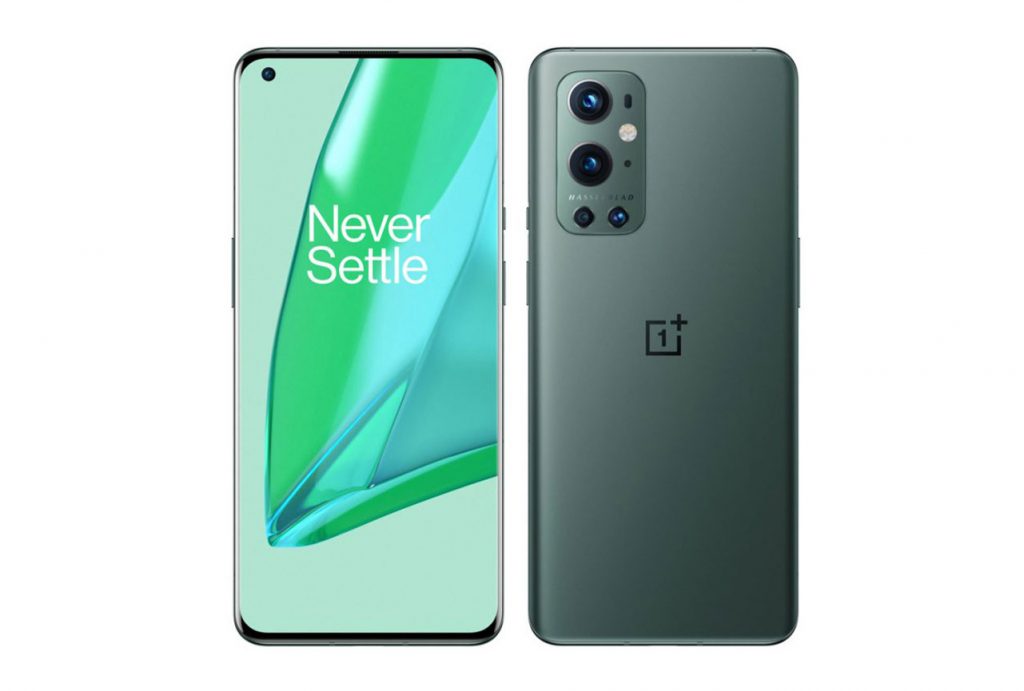
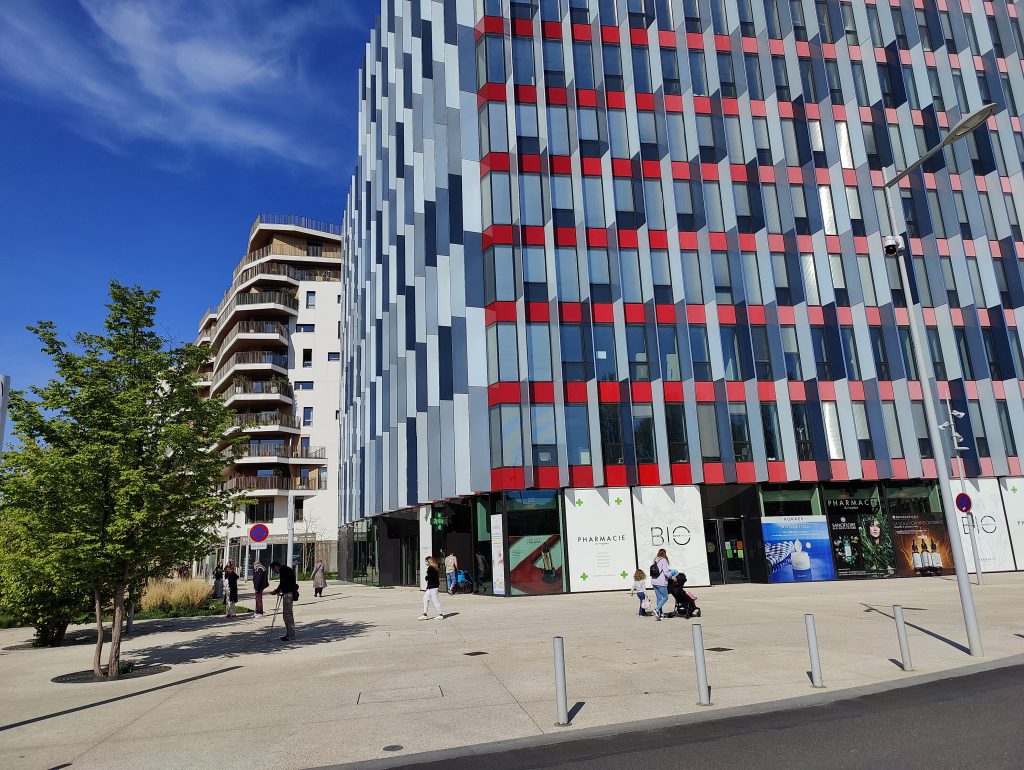










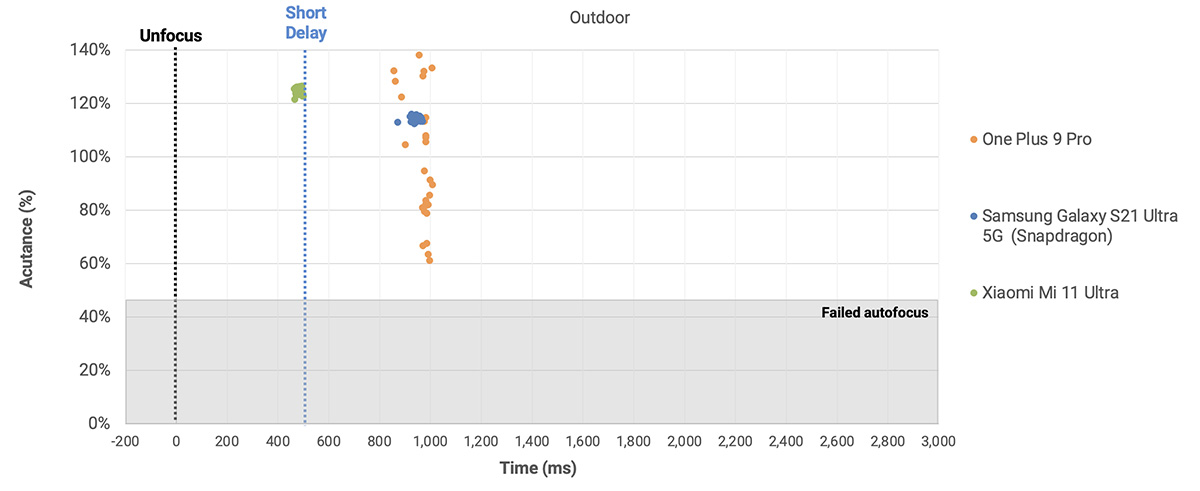






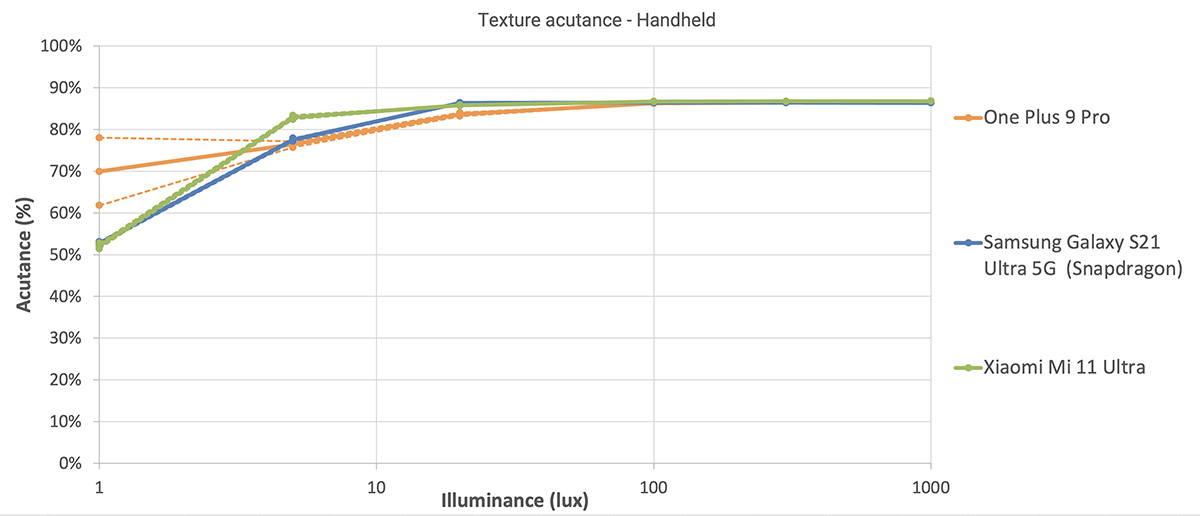



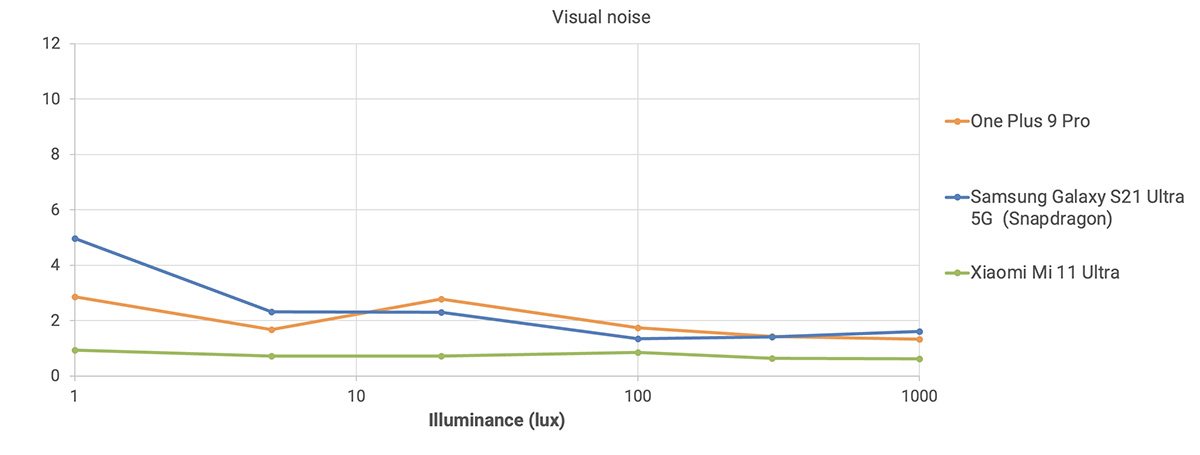








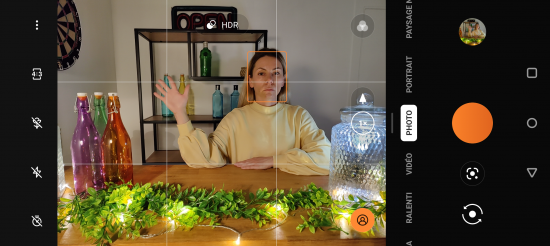

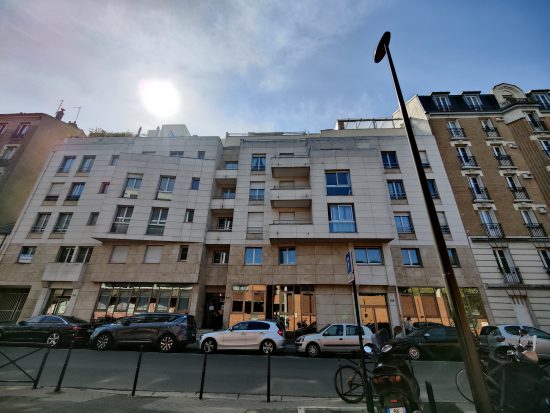
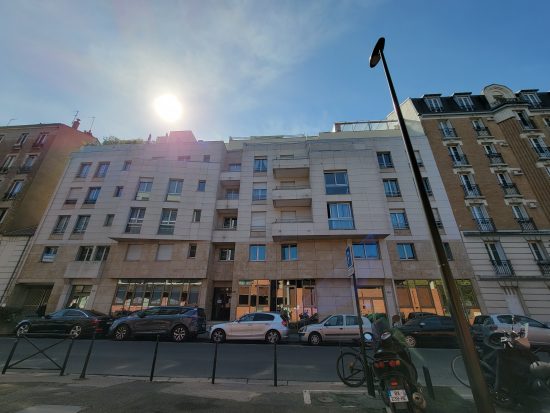
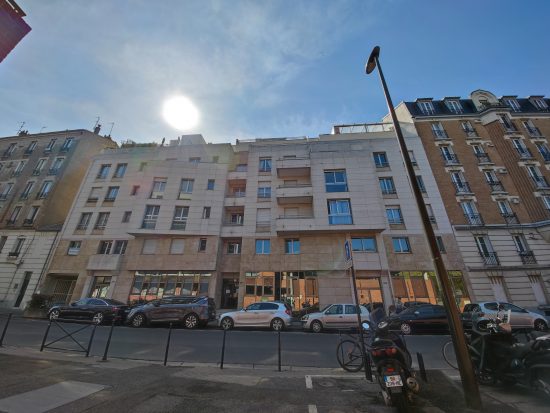



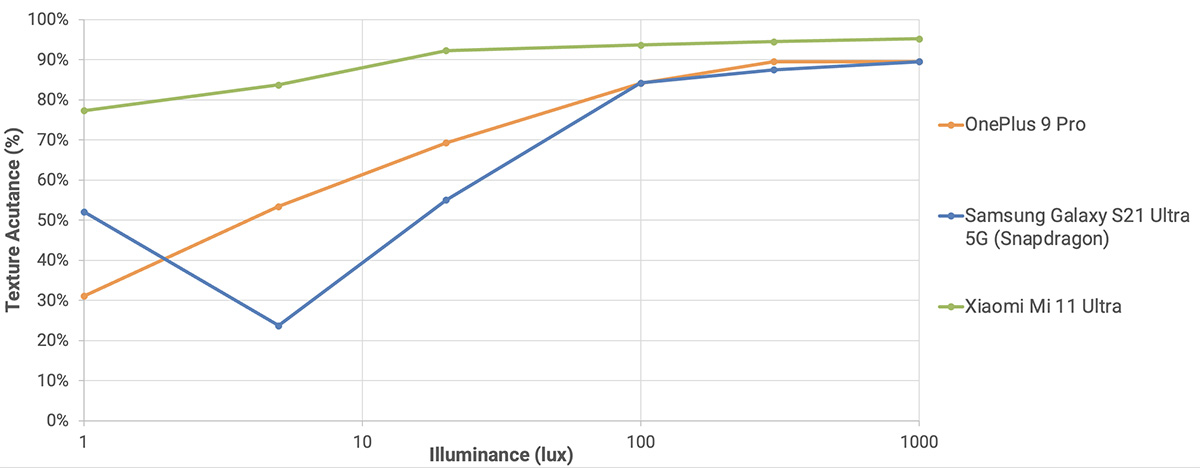



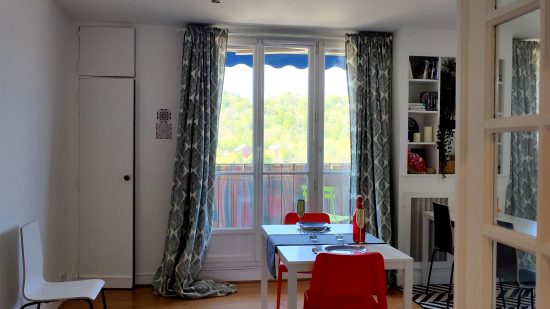


DXOMARK encourages its readers to share comments on the articles. To read or post comments, Disqus cookies are required. Change your Cookies Preferences and read more about our Comment Policy.